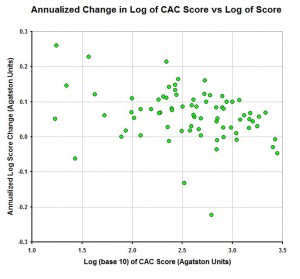Marcia Angell, a former editor of JAMA, may be the most prominent critic of drug companies. The most recent two issues of the New York Review of Books contain a two-part critique by her of psychiatry. I liked Part 1 because she described the excellent work of Irving Kirsch (The Emperor’s New Drugs). Part 2, however, is a disaster.
She goes on and on about the evils of the DSM s — the diagnostic manuals of psychiatry. Improving the reliability of diagnosis is playing into the hands of the drug companies, she seems to say. She complains that the number of diagnoses is increasing. Well, yes, all diagnostic systems get larger over time. This is a good thing; if you don’t have a name for a problem, it is hard to do cumulative research about it and hard to communicate research results to everyone else. She complains, apparently, that new categories are being added:
There are proposals for entirely new entries, such as “hypersexual disorder,” “restless legs syndrome,” and “binge eating.”
She does not say why this is bad. Maybe she thinks it’s obvious. It isn’t obvious to me. Diagnostic categories help researchers and doctors and the rest of us communicate. For example, Dennis Mangan’s research shows why it is a good idea for the term restless legs syndrome to have an agreed-upon meaning.
She complains that the DSM doesn’t have enough “citations”:
There are no citations of scientific studies to support its decisions. That is an astonishing omission, because in all medical publications, whether journal articles or textbooks, statements of fact are supposed to be supported by citations of published scientific studies. (There are four separate “sourcebooks” for the current edition of the DSM that present the rationale for some decisions, along with references, but that is not the same thing as specific references.)
Please. This is clueless. A diagnostic manual is a dictionary. It assigns meanings to diagnostic categories. You can make a useful dictionary without “citations of scientific studies”. Long before you can do scientific studies about the best way to define dog you can come up with a definition of dog that is better than nothing.
She ends her review with this:
Above all, we should remember the time-honored medical dictum: first, do no harm (primum non nocere)
Gag me with a spoon. Time-honored? Doctors — with the support of JAMA, not to mention the rest of the health-care establishment — continually prescribe drugs with bad side effects and high prices and suppress innovative alternatives. (Not only that. My own surgeon recommended a dangerous surgery of no clear value.) How they can claim to do no harm escapes me.
Sure, psychiatry is awful. For a long time psychiatrists rallied around a transparent intellectual fraud (Freud and his offshoots). Now they rally around a less transparent intellectual fraud (neurotransmitter theories of mental illness). Psychotherapists and their wacky theories and no-more-effective treatments are no better so I wouldn’t blame the drug companies for the underlying problem. I put the problem like this: Our health care system consists of a very large number of people, many with very large salaries, who must get paid. Being human, they strongly oppose any progress that would reduce their salary or influence or, heaven forbid, eliminate their job. Because of them, many promising lines of research, such as prevention via environmental change or cure via nutrition, are completely or almost completely ignored. This is the fundamental reason Angell’s critique is so bad: She is part of the problem. She is very smart, but she’s been brainwashed (“ primum non nocere“!). She utterly ignores the fact that we don’t know what causes depression, what causes schizophrenia, what causes autism, and so forth. Only when we learn what causes these and other mental disorders will we be in a good position to improve our mental health.
